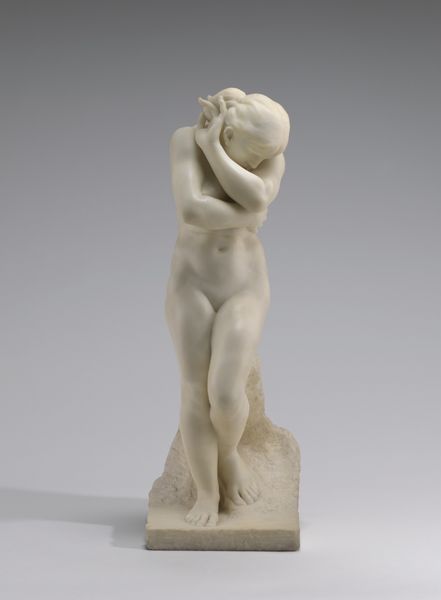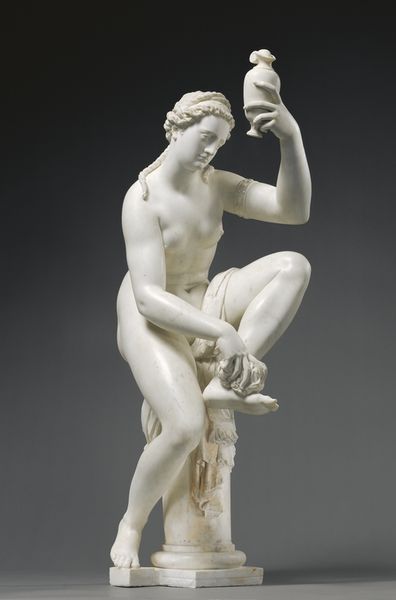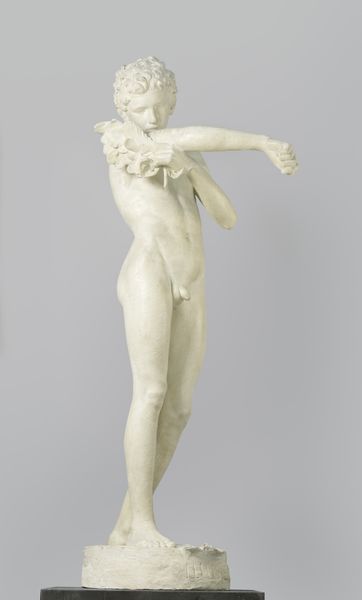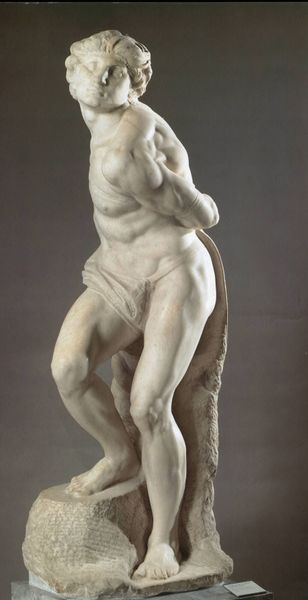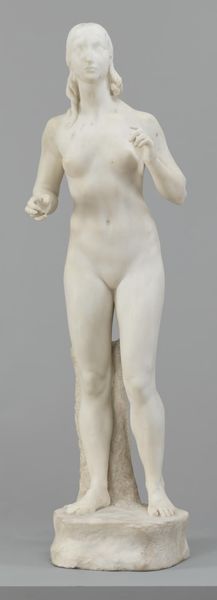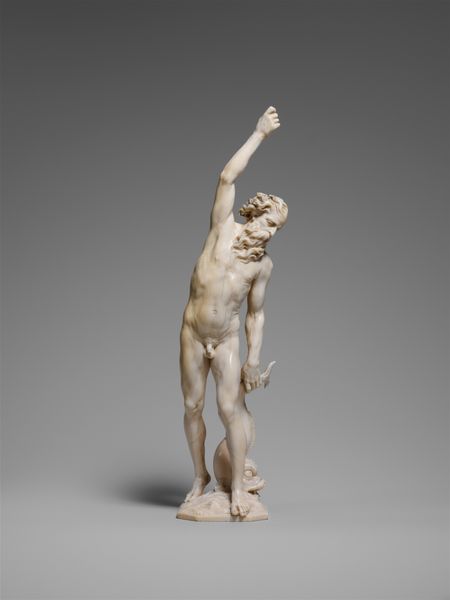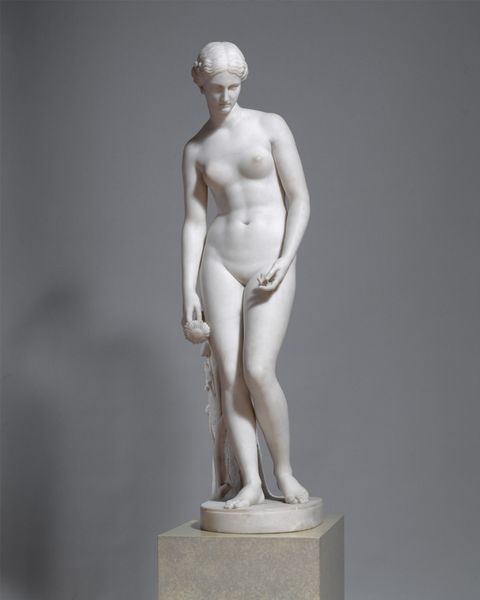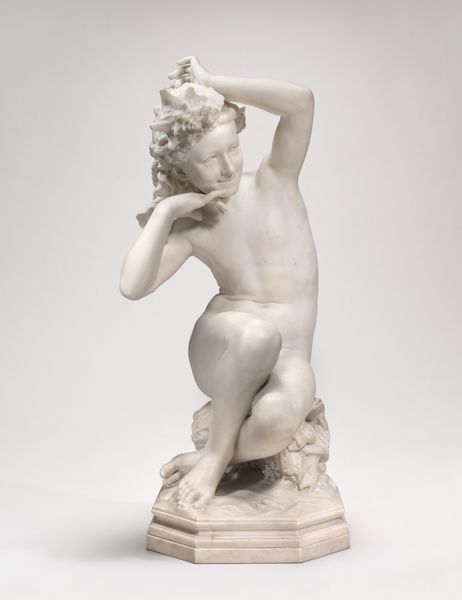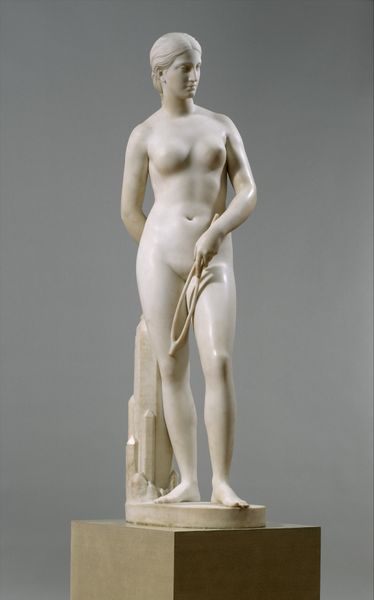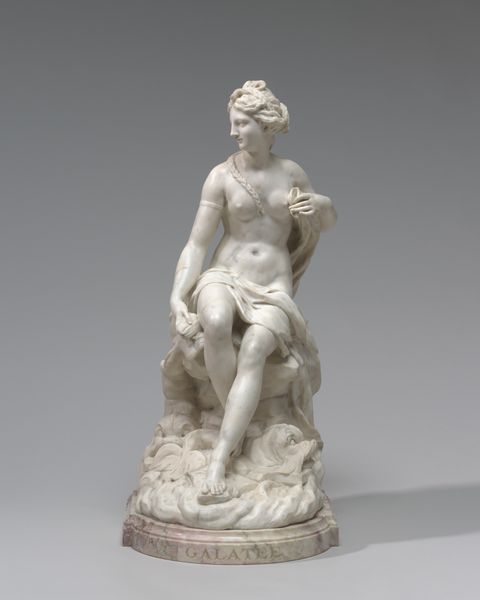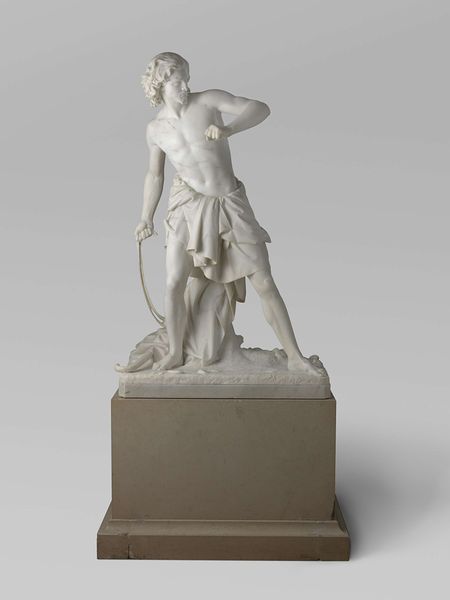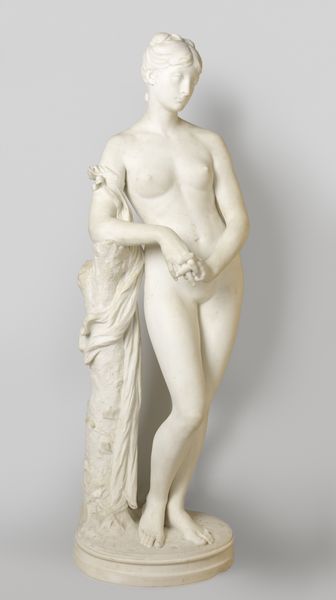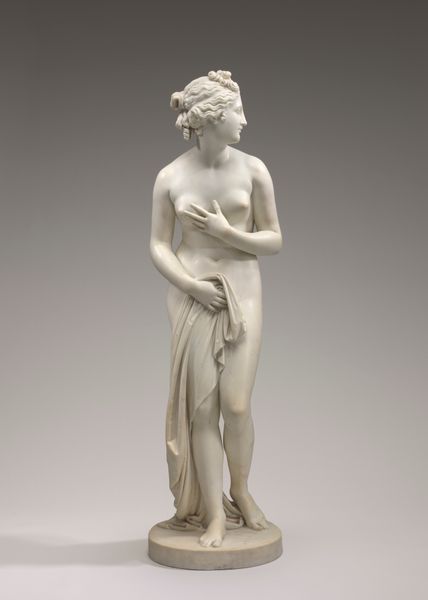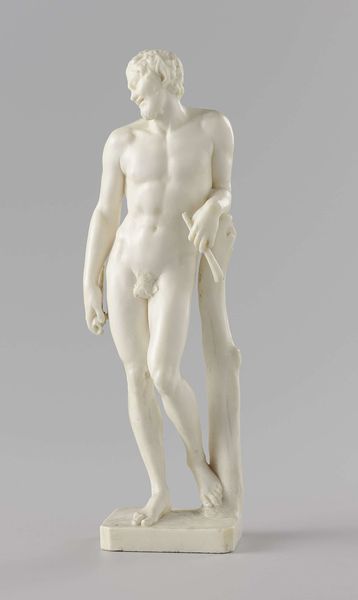
inorganic-material, sculpture
#
imaginative character sketch
#
statue
#
rounded shape
#
product design sketch
#
3d character model
#
character drawing reference
#
rock
#
character sketch
#
inorganic-material
#
sculpture
#
figure sketch
#
character design
#
france
#
technical sketch
#
3d character modeling
Dimensions: 76.2 × 27.4 × 21 cm (30 × 11 × 8 1/4 in.)
Copyright: Public Domain
Curator: This is Auguste Rodin’s "Eve after the Fall," sculpted between 1883 and 1886, currently housed at the Art Institute of Chicago. Editor: Immediately, the figure projects vulnerability. There’s a real sense of shame and inward collapse. I’m curious about the marble he chose—its color, veining... Did that factor into Rodin's expressive goals? Curator: Rodin's Eve, different from conventional depictions of her beauty, bears the weight of the Fall. The protective posture and downcast gaze are heavy with that shame. Consider that this piece embodies a departure from the idealized nude to reveal something very raw. Editor: It's almost as if the sculpture is caught mid-cry. The texture seems vital. Look at how Rodin's chisel marks remain evident, a testament to the physical act of carving, bringing forth a sense of labor to represent such interior despair. The social implications are impossible to ignore; the work's very existence as an object for sale contributes to an economy built on vulnerability. Curator: Precisely. And Rodin presents us not just with the moment of original sin, but the psychological aftermath passed down, embedded in our collective consciousness. She represents a cautionary tale about the dangers of knowledge. Editor: I agree, and to add, the positioning is no coincidence: Eve's close, cramped posture speaks to a claustrophobia brought about by her choices, made all the more imposing when we realize the statue's significant scale in physical space. Rodin manipulates stone to signify feeling in a very modern way. Curator: Viewing this work invites us to meditate on shared human experiences of regret and transformation, prompting us to think about universal symbols that tie past and present into cohesive narrative of cause and consequence. Editor: Indeed, contemplating its process and physical manifestation certainly underscores how interwoven the story of humankind is within the materiality that makes art so unique and memorable.
Comments
No comments
Be the first to comment and join the conversation on the ultimate creative platform.
